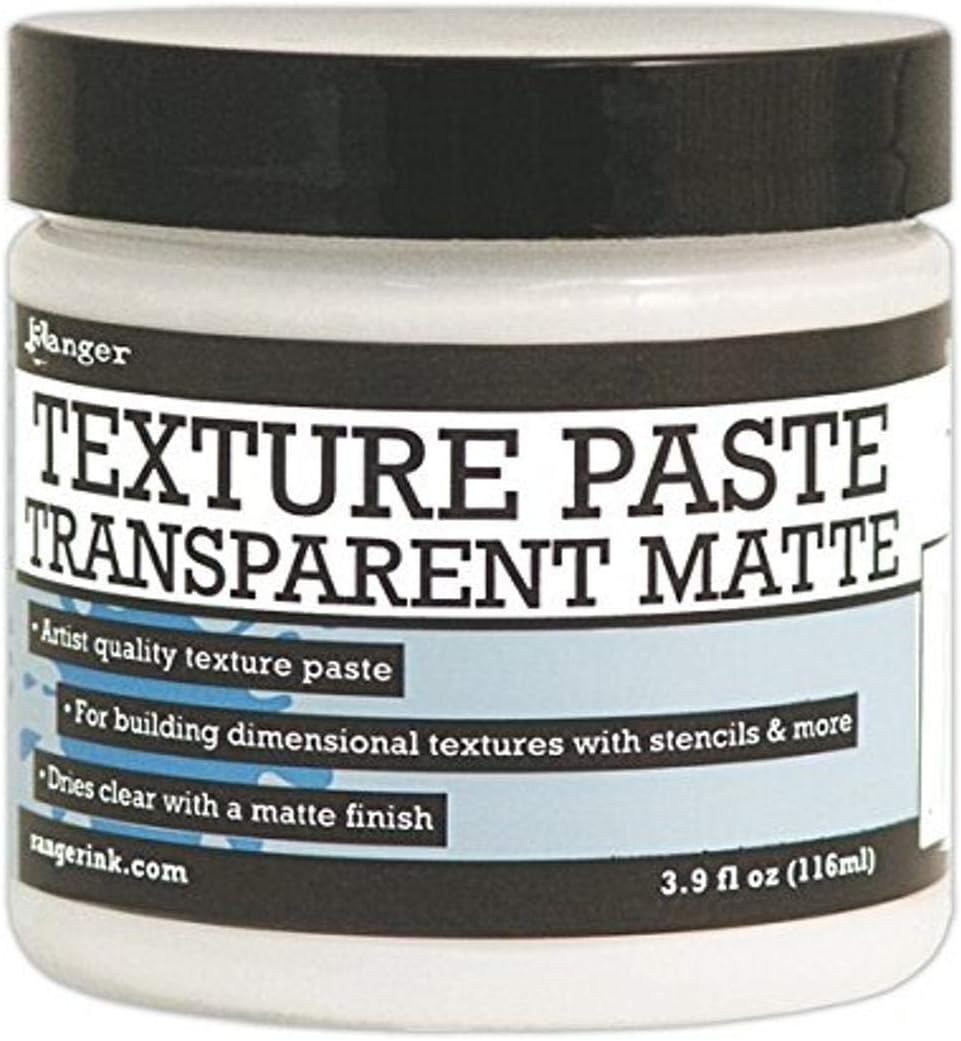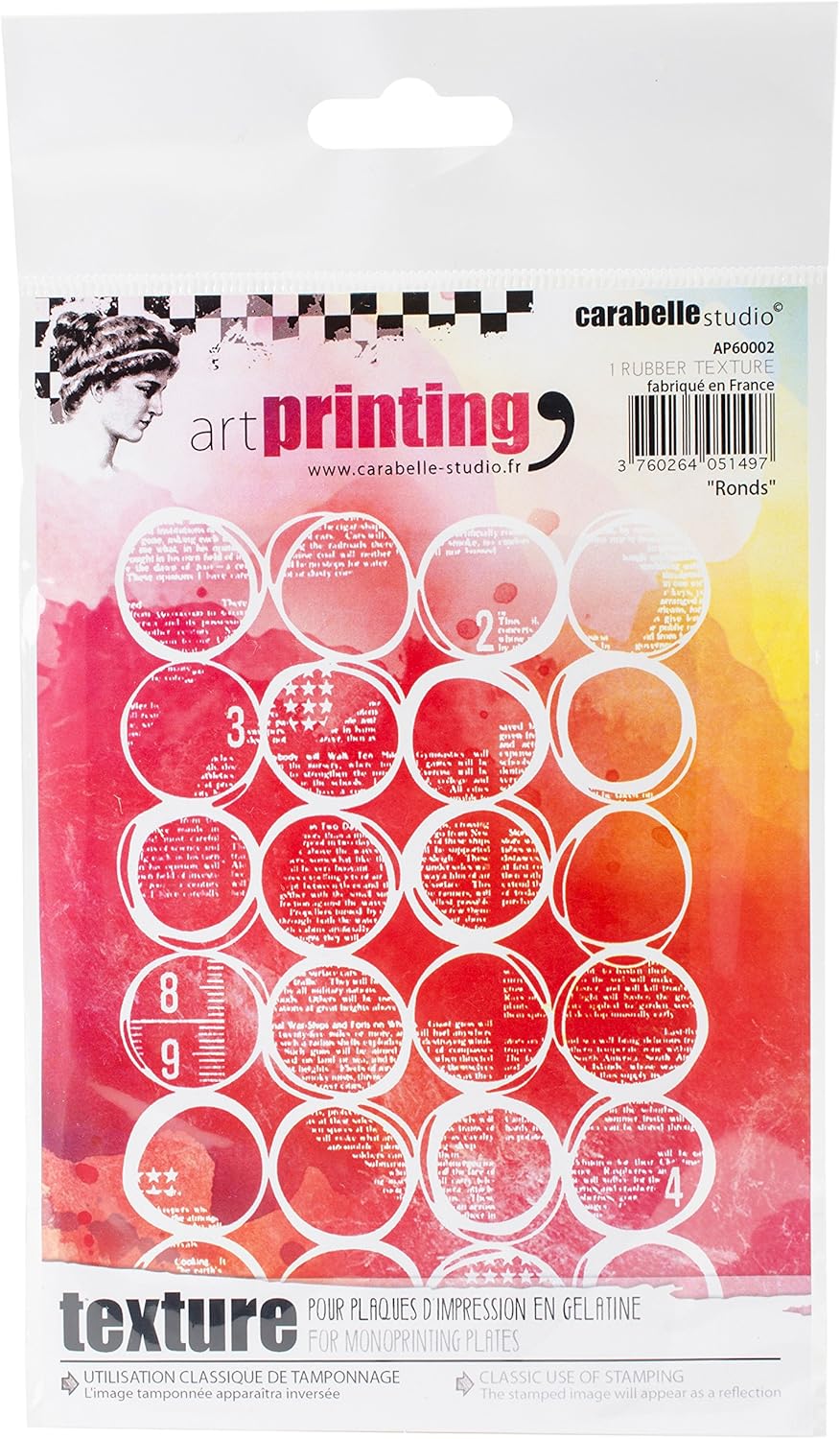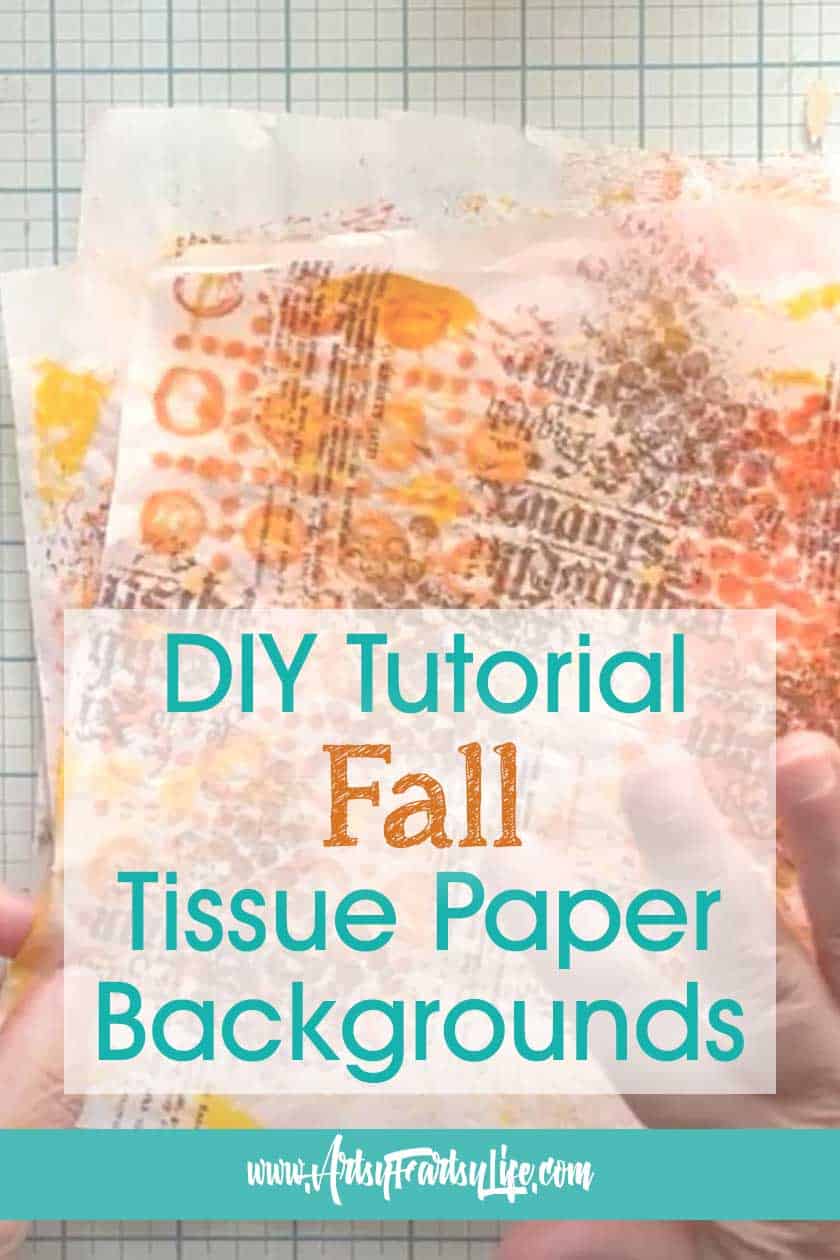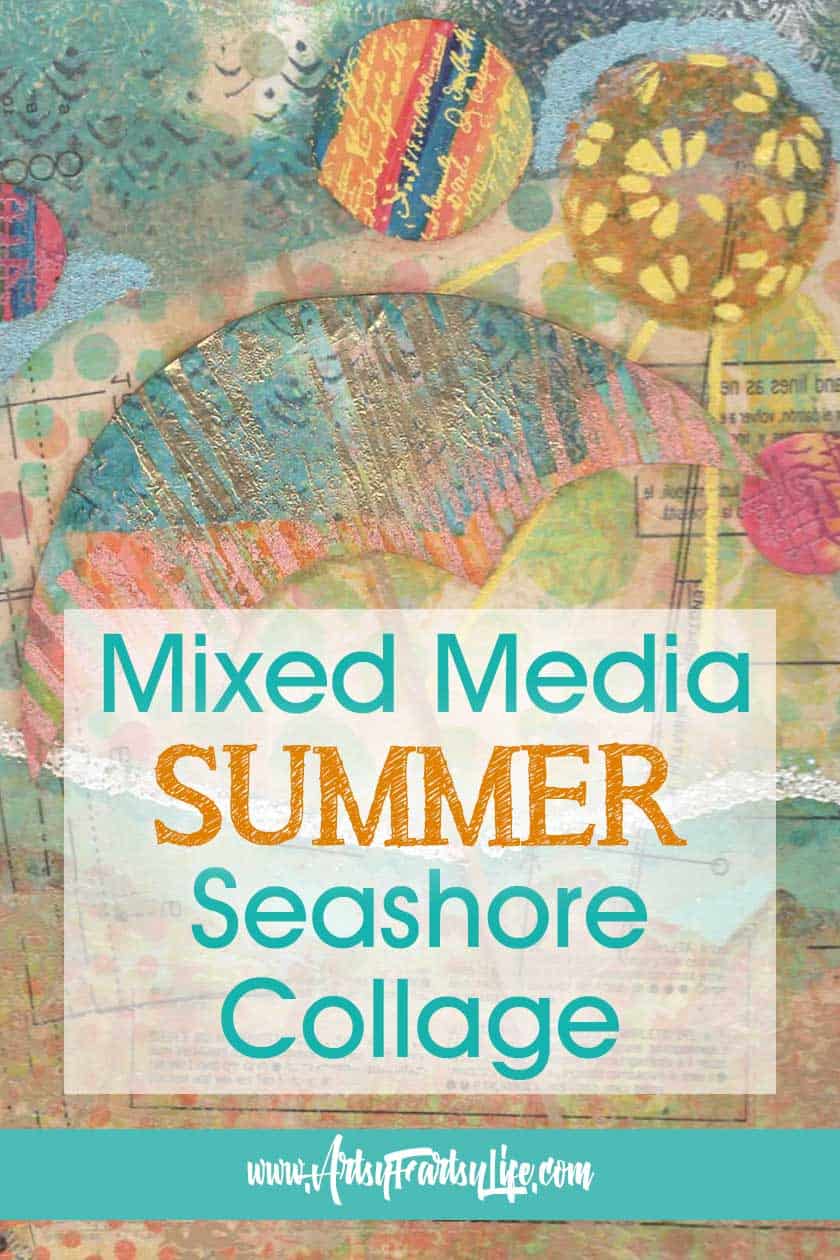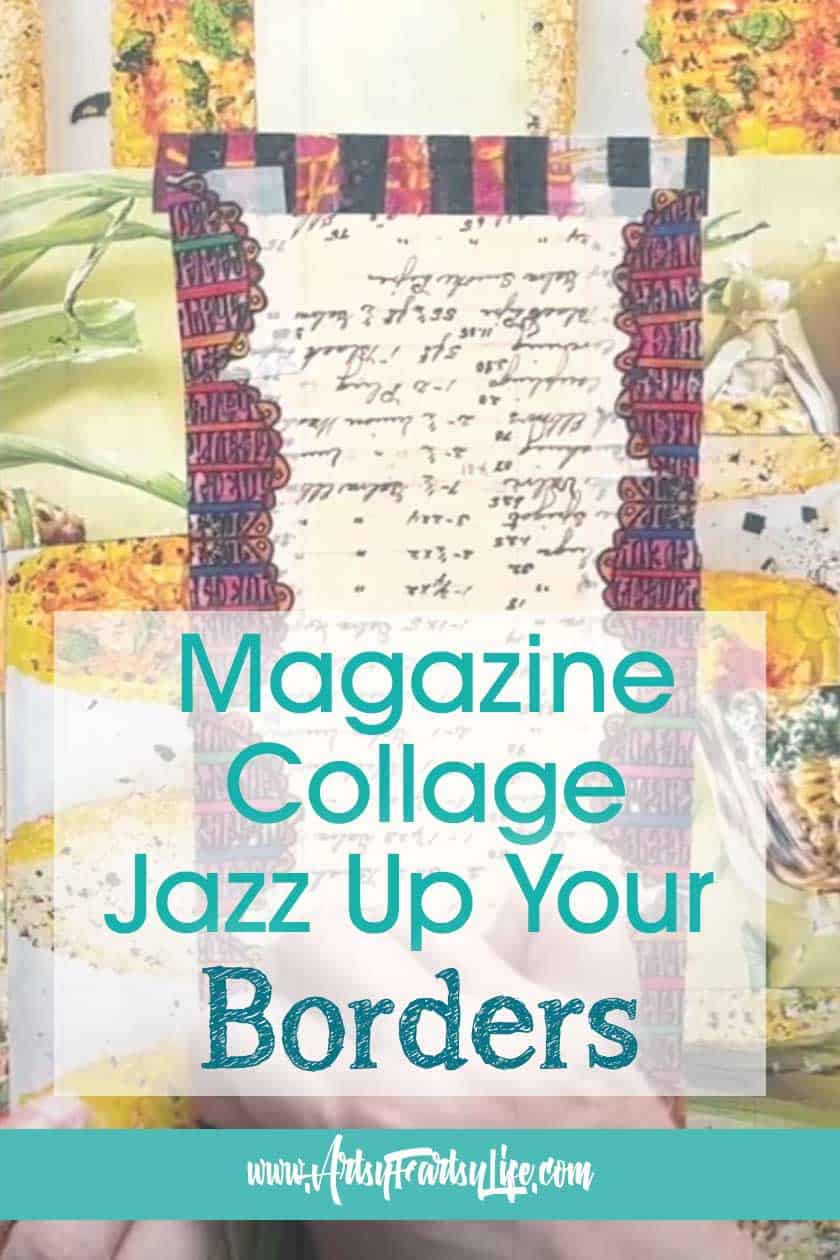Texture paste is a great way to add dimension and pattern to your mixed media artwork! Here are all my best tips and ideas for using texture paste in your art journal or mixed media projects.
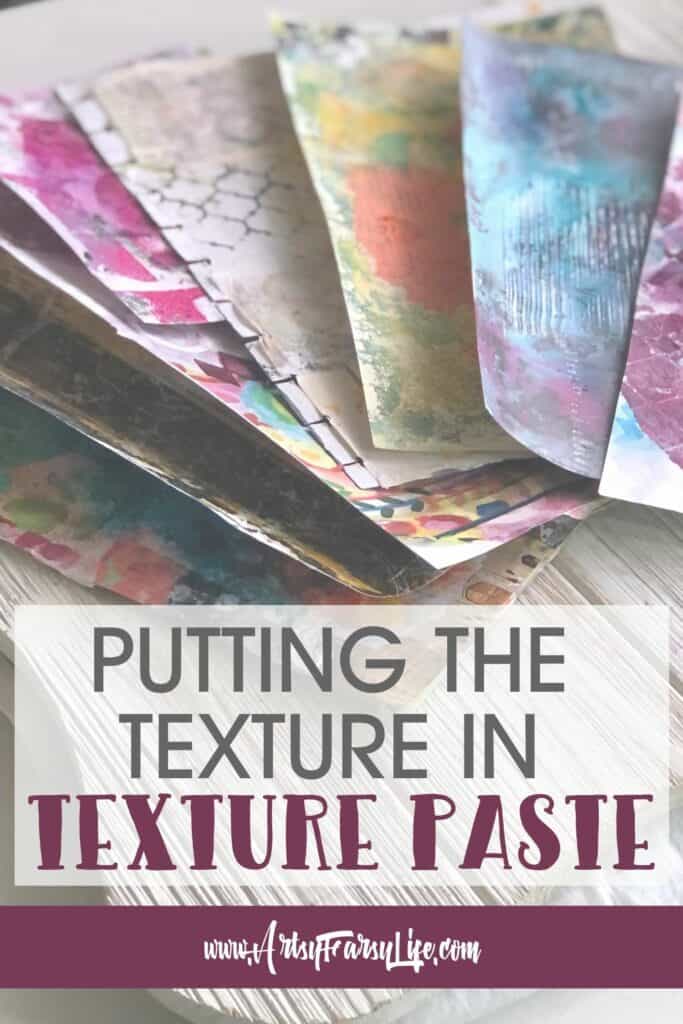
While I have many different art supplies in my craft room, one that I go to again and again is texture paste! It is great for adding a little bit of interest in your projects and can be a quick and easy way to add interest and dimension to any art piece.
Full Texture Paste Video Tutorial
Products Used In The Video
- Distress Texture Paste
- Ranger Translucent Texture Paste
- Glamour Paste Sparkling White - Stamperia
- Marabu Acrylic Mousse
- Plastic Palette Knife
- Stencils From Stash
- Clay Tools From The Dollar Store
- Carabelle Avex De Points
- Carabelle Rounds
- Shelf Liner and Bubble Wrap From Stash
- Cake Decorating Fondant Molds
- Dr. Ph. Martin's Bombay India Ink (Set 2)
What Is Texture Paste?
There are SO MANY different kinds of texture paste out there that it can be hard to know what to use! Here are a few different kinds for you to check out....
"Regular" Texture Paste
When I think of regular texture paste I think of a white, stiff kind of product that you can spread through a stencil or stamp into using a variety of textured items.
I use Ranger Texture paste as my go-to kind because it takes inks and dyes well AND it is made in the USA which I like!
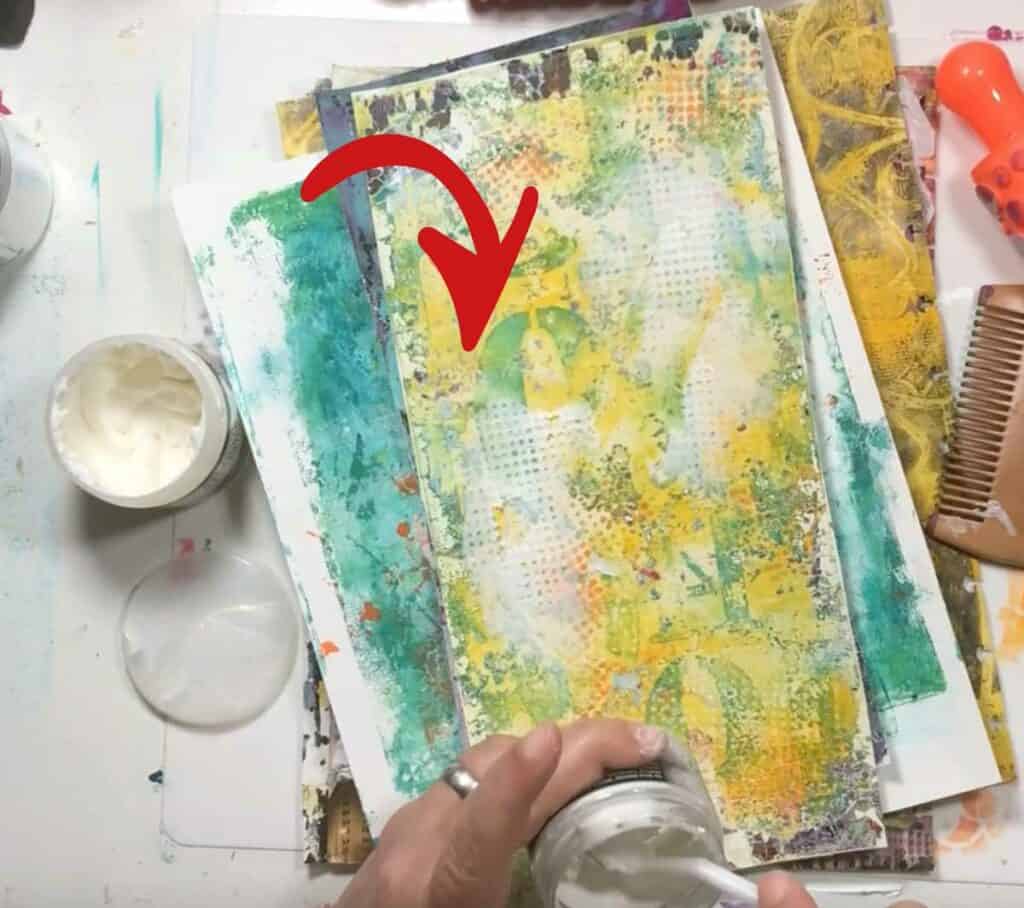
It is opaque, meaning that it covers up whatever is underneath of it.
You can sometimes add color to it before spreading it on, but that might decrease the consistency so check a little bit before doing this!
Tim Holtz - Ranger TEXTURE PASTE 3OZ MATTE
Translucent Texture Paste
Clear texture paste is my FAVORITE! It allows you to see the artwork underneath and acts as a kind of resist (other products don't stick well to it).

You generally can't tint this kind of texture paste and it is thinner and less stiff than regular texture paste.
Ranger Texture Paste Transparent Matte, 4 oz
Specialty Texture Pastes
Okay, there are a million different kinds of speciality texture pastes!
Ranger has grit paste, which is sandy and grunges up beautifully. Seth Apter is bringing out Flakey texture paste and there are even glossy or metalic texture pastes out there.
For the video I used Glamour Texture Paste which had a sheen to it and went on VERY smoothly... I liked it a LOT!
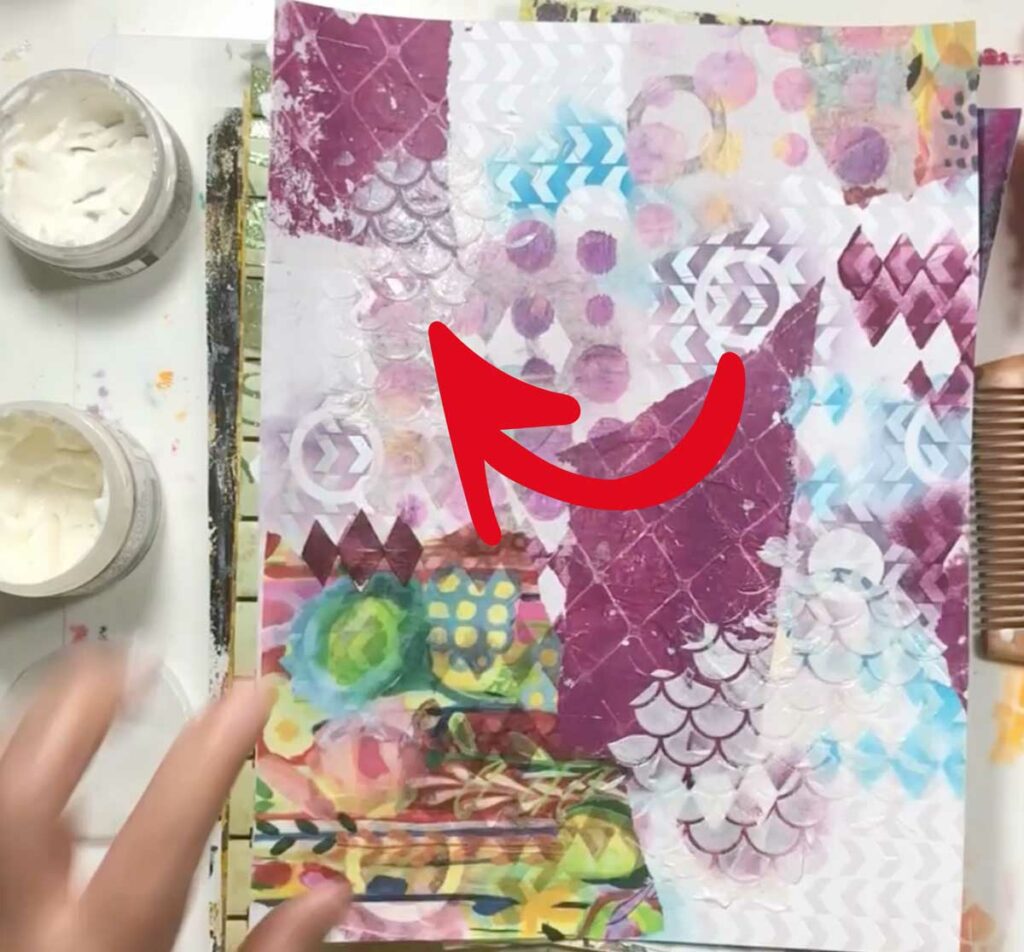
FOR SURE, start with normal or translucent texture pastes and then move on to the fancy ones after you find out how you like to use them best.
How To Spread Texture Paste
I have found that using a plastic palette knife works the very best for spreading texture paste!
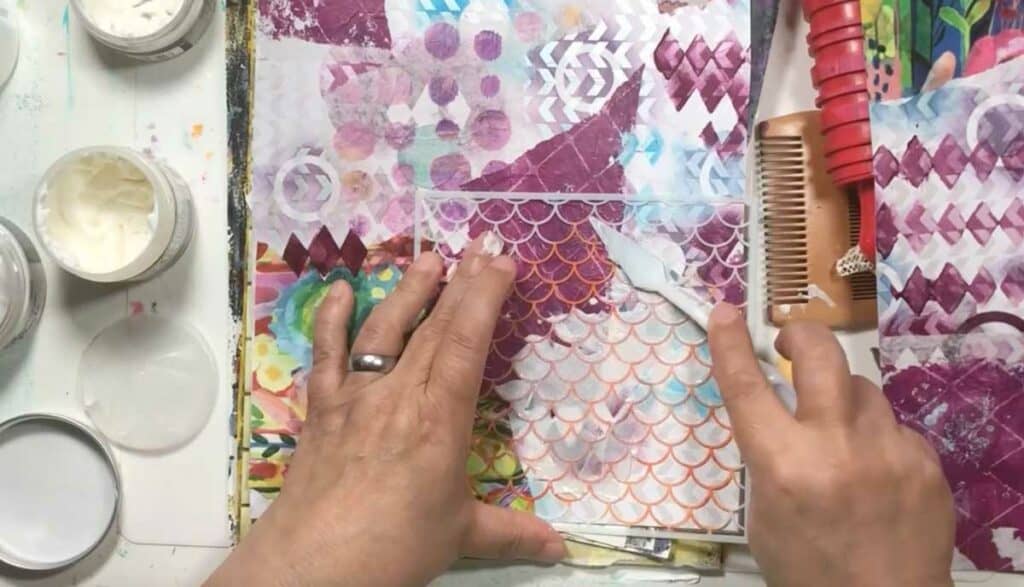
I have metal ones and thought I might like using a vintage paint scraper, but the flexibility of the plastic tool really makes spreading the texture paint MUCH easier!
6Pcs White Art Artist Paint Spatula Tools Art Sherpa Palette Knife Set 5pc Set
Art Sherpa Palette Knife Set 5pc Set
Using Texture Paste With Stencils
My very favorite way to use texture paste is through stencils. This allows you to have dimension AND shape.

Functionally for this you want to spread the texture paste along the stencil until it "catches" in the holes and then scrape off the parts that are above the stencil lines.
One thing to note is that you HAVE to wash your stencils after using texture paste with them. If you don't, the texture paste can fill in the spaces in the stencils or get crusty bits around the edges that are hard to remove later!
Using Texture Paste With Texture Plates
There are fancy "texture plates" that you can use with stencils. These are a super speciality item and can be a wee bit pricey for what they do!
I used Carrabelle texture plates to make the dots in this texture paste. It is nice, but I have found other things that work well for much cheaper!
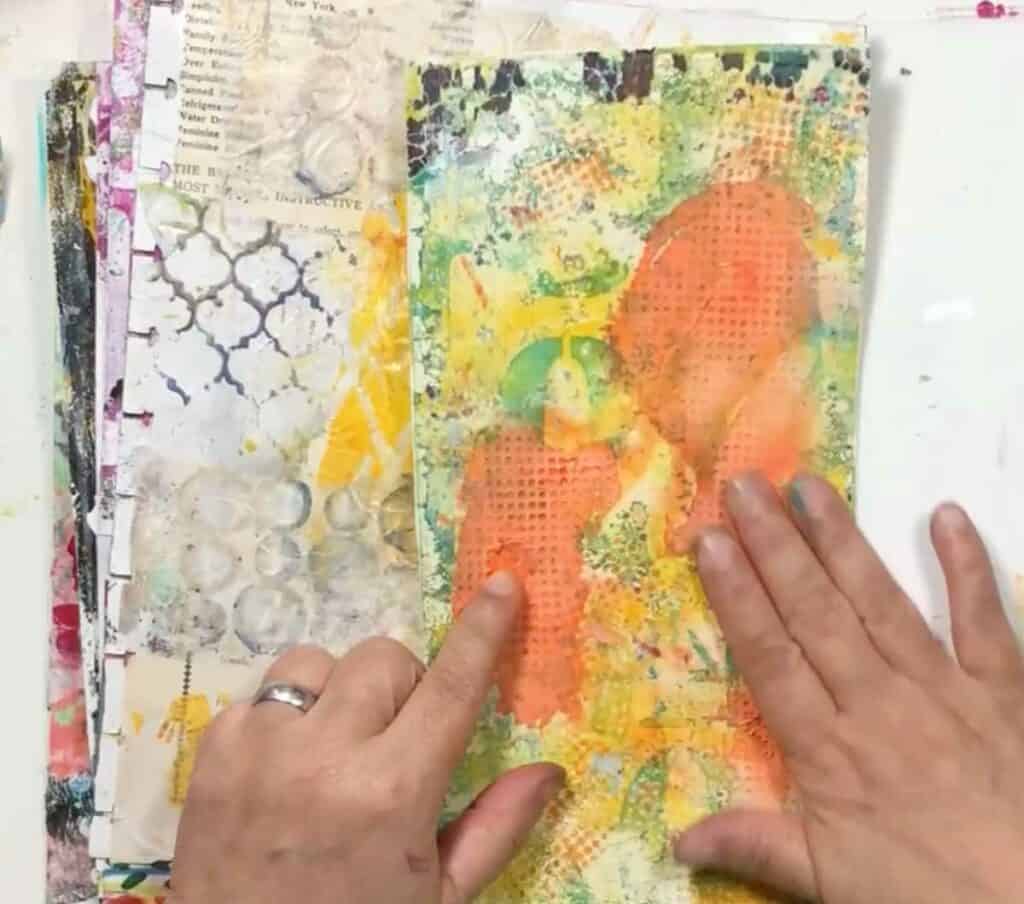
Carabelle Studio Art Printing A6 Rubber Texture Plate, Rounds Carabelle Studio Art Printing A6 Rubber Texture Plate, Background With Dots
Carabelle Studio Art Printing A6 Rubber Texture Plate, Background With Dots
Using Texture Paste With Common Objects
Okay, this is what I think is coolest about texture paste... you can use just about anything to make texture!
I got 4 clay rollers at the dollar store and used them to make the this texture!
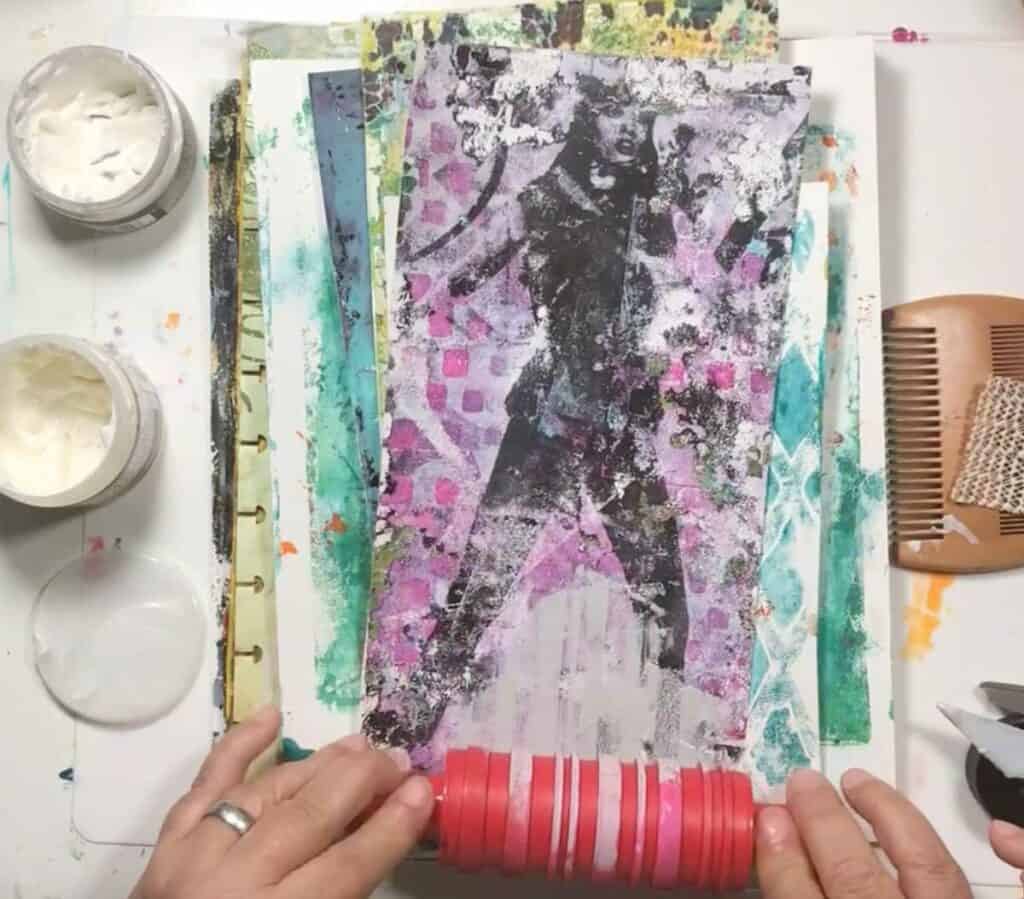
Sitting right there too is a dollar store beard comb that makes awesome lines, I use a lego block to make circles and you can even use bubble wrap or mesh from vegetables in a pinch!
What I will say though is that things with a harder surface do better with the texture paste. So while bubble wrap WILL work, it isn't brilliant.
Better to look around your house to see what kinds of hard things you have laying around to use in your art!
Texture Paste FAQs
Oh my gosh, I was SO intimidated when I started using texture paste. I though it was something that fancy artists did and that I would NEVER "get it".
Fast forward a couple of months and I am a texturing nut! If it isn't stuck down I am adding a wee bit of texture to it!
So here are a few things I wondered about before I became a "texture expert"... hahaha.
How Long Does Texture Paste Take To Dry?
Okay, this is going to depend on where you live. In Florida where I live, the fastest it will dry is an hour... if it is thick then I have to wait overnight.
If you live in a dry climate, you will have a better time getting it to dry fast!
How Long Does Texture Paste Last?
There are so many things that this depends on... do you close the lid? Did you put a damp paper towel over the top of it before you closed it up? Or are you derpy like me and just throw caution to the wind and leave it all kinds of open?
I have found that the "regular" kind dries up the fastest. It is already dry-ish and tends to be super fussy about having it's lid open.
The wetter, smoother kinds tend to not dry out as much (maybe that is why I like them more?)
Can You Mix Colors With Texture Paste?
Okay, let's talk chemistry for a wee minute! The manufacturers of texture paste do A LOT of work to get it to the perfect consistency. When you add anything else to it, it will change the properties of the texture paste itself.
SOOOO I tend to add color AFTER I do the paste, but you can try different things.
For example, alcohol inks pack a lot of color into a little bit of liquid so they may work, or you may try ink pad re-inkers which also have high density color.
I think if you tried adding paint to your texture paste it would dilute the efficiency of the actual "paste" part.
Can You Remove Texture Paste After It Dries?
Pretty much nope!
Think about it, you are putting a product onto paper and it is going to be hard to separate them after they have adhered to each other.
You could perhaps knock it down a bit with a paint scraper, but functionally it is very good at what it does!
Is Modeling Paste The Same As Texture Paste?
Functionally yes! For our purposes, modeling paste will make a texture with a stencil or texture plates on your mixed media artwork.
I have not used modeling paste, only texture paste, but Liquitex makes a modeling paste that seems to be the same thing!


